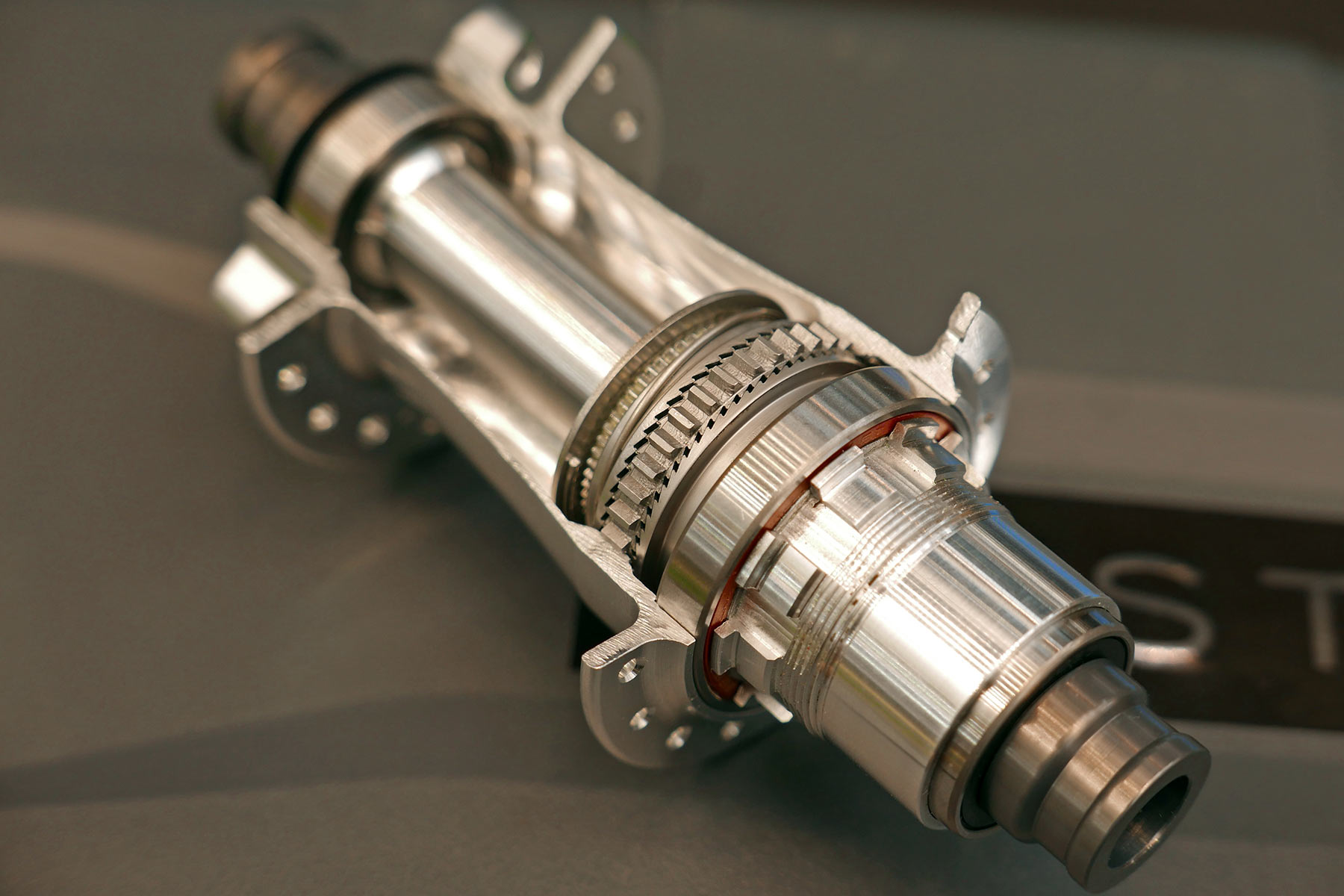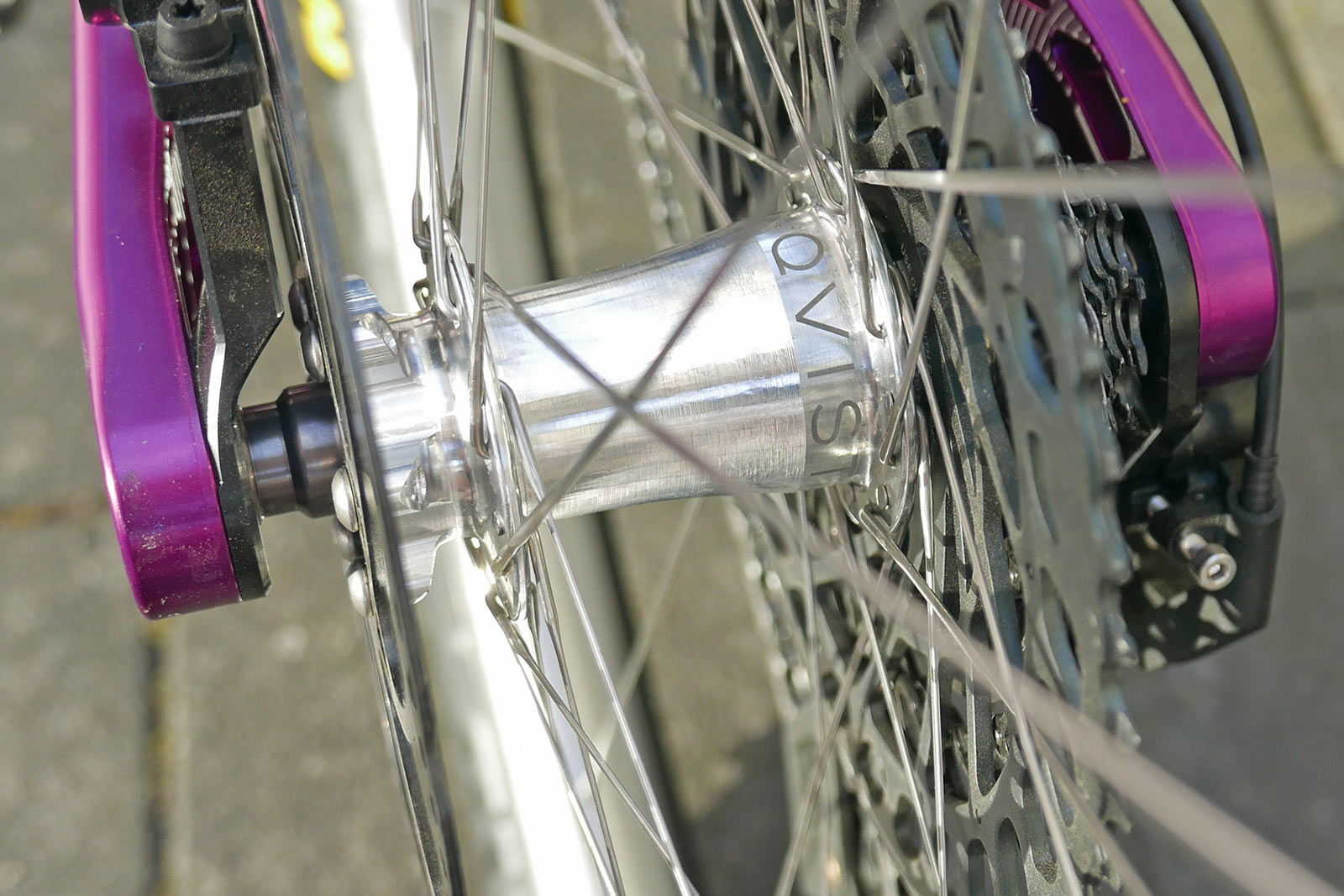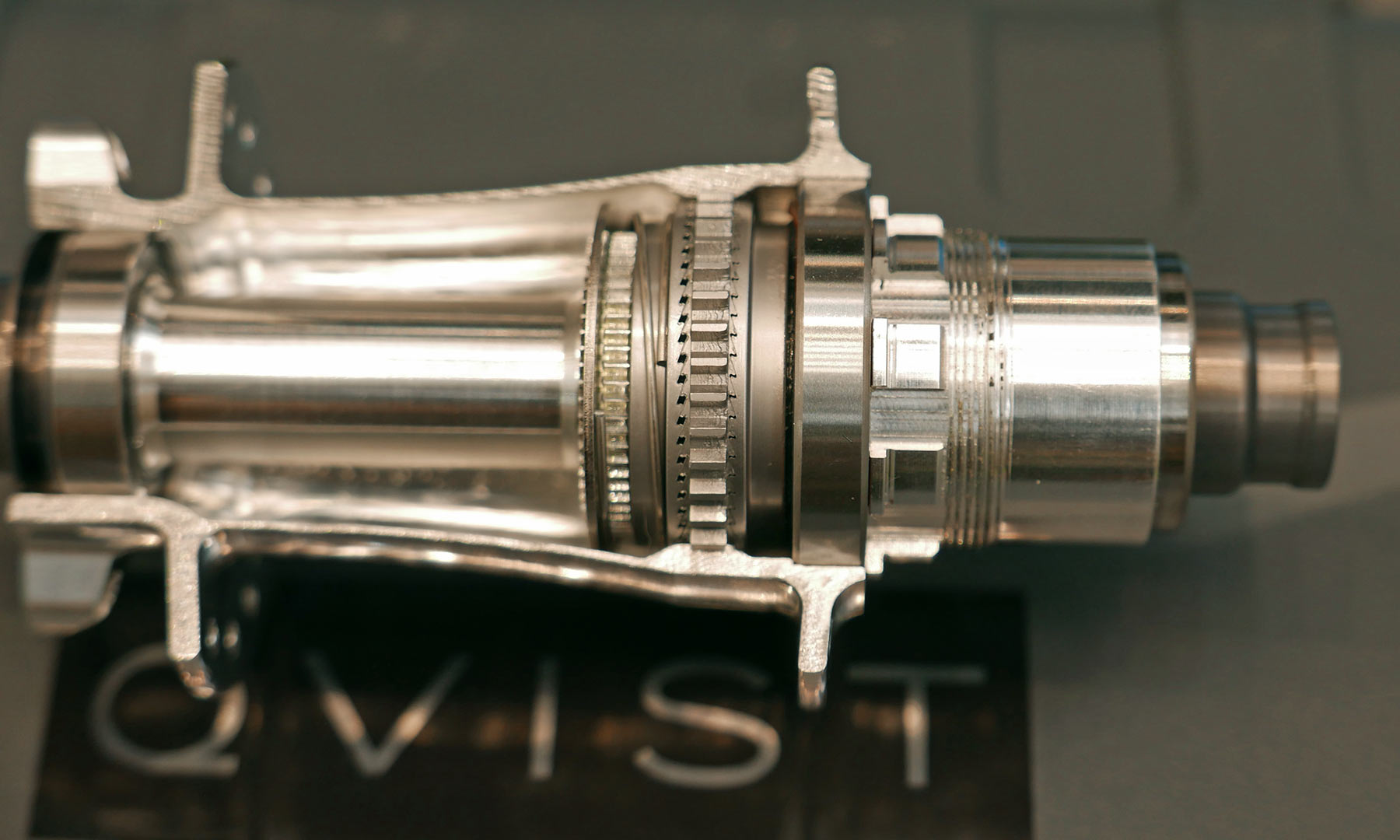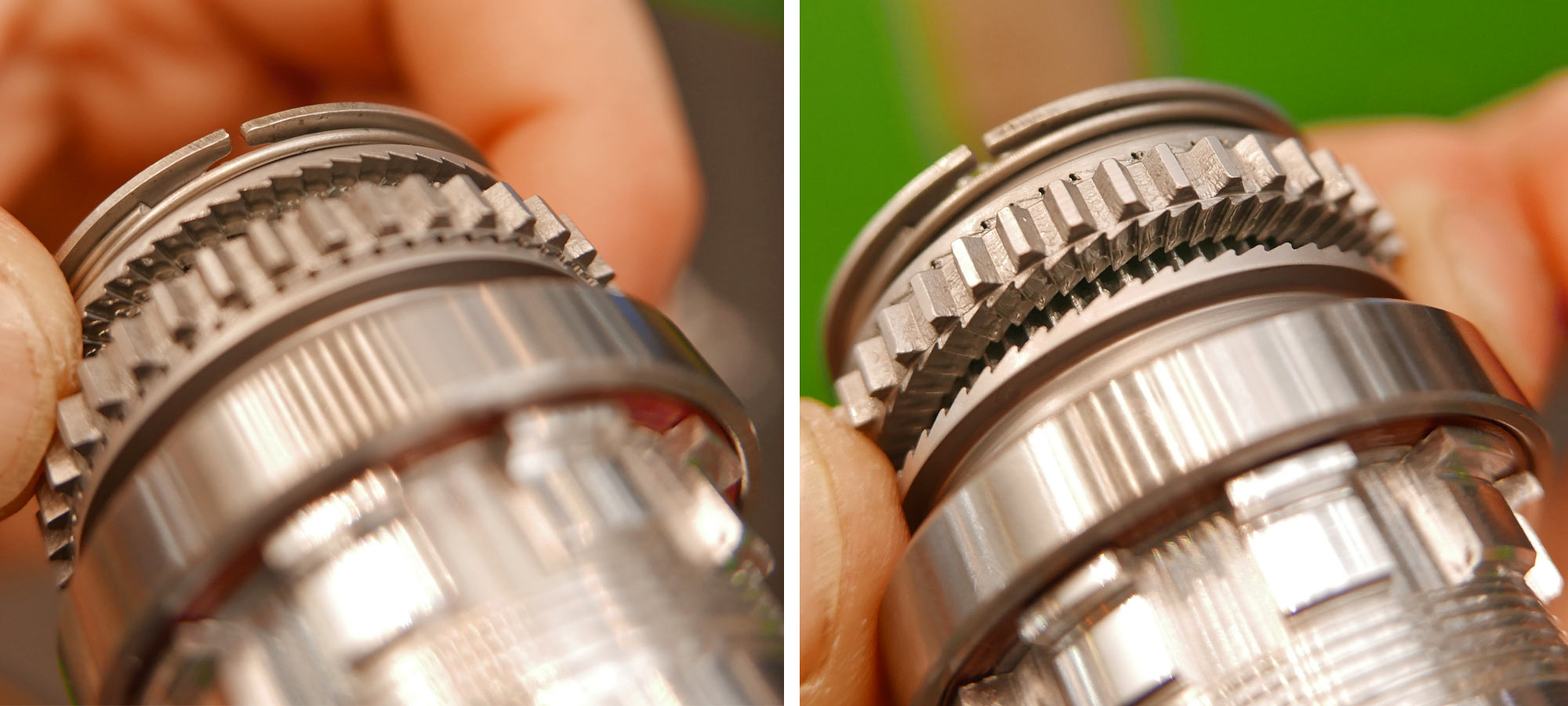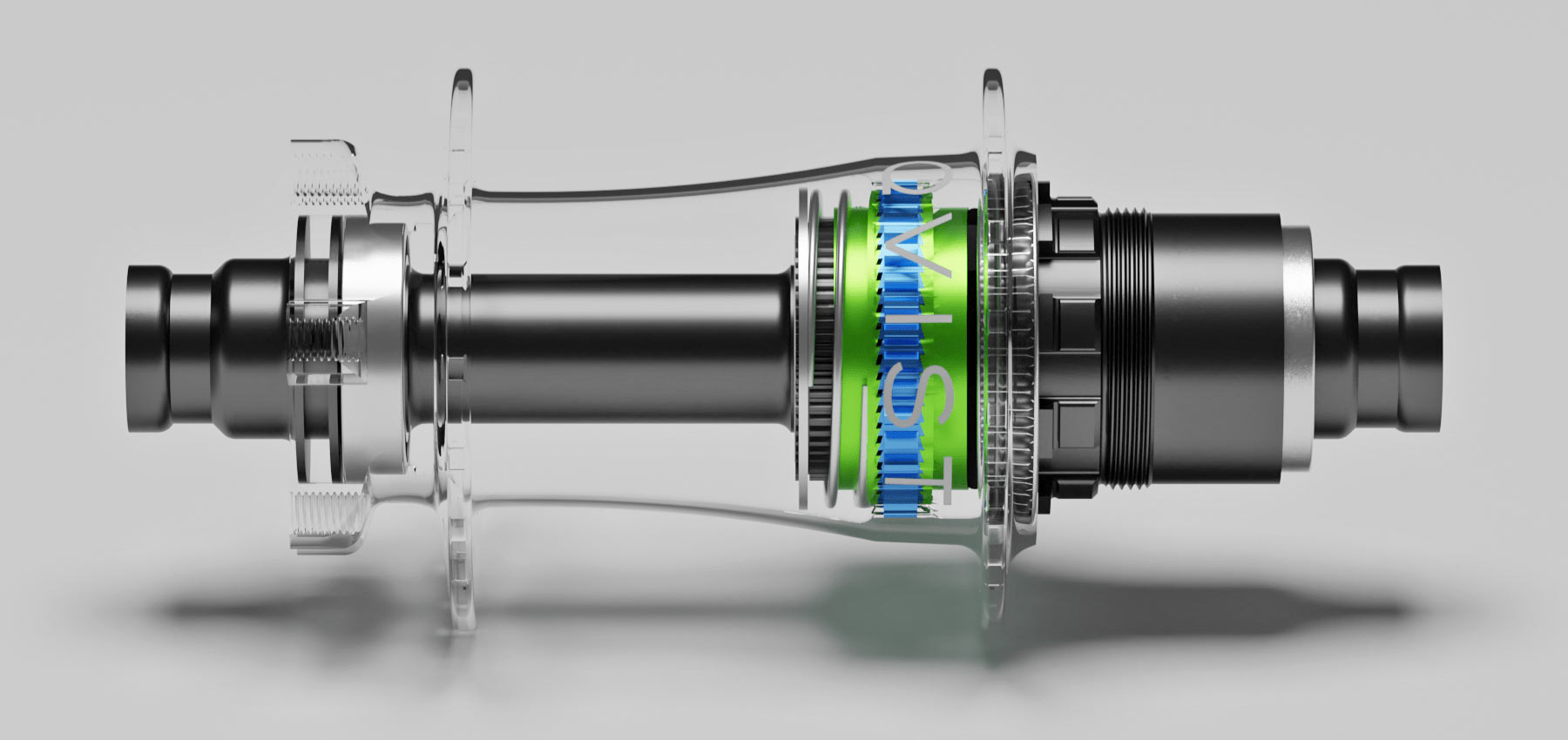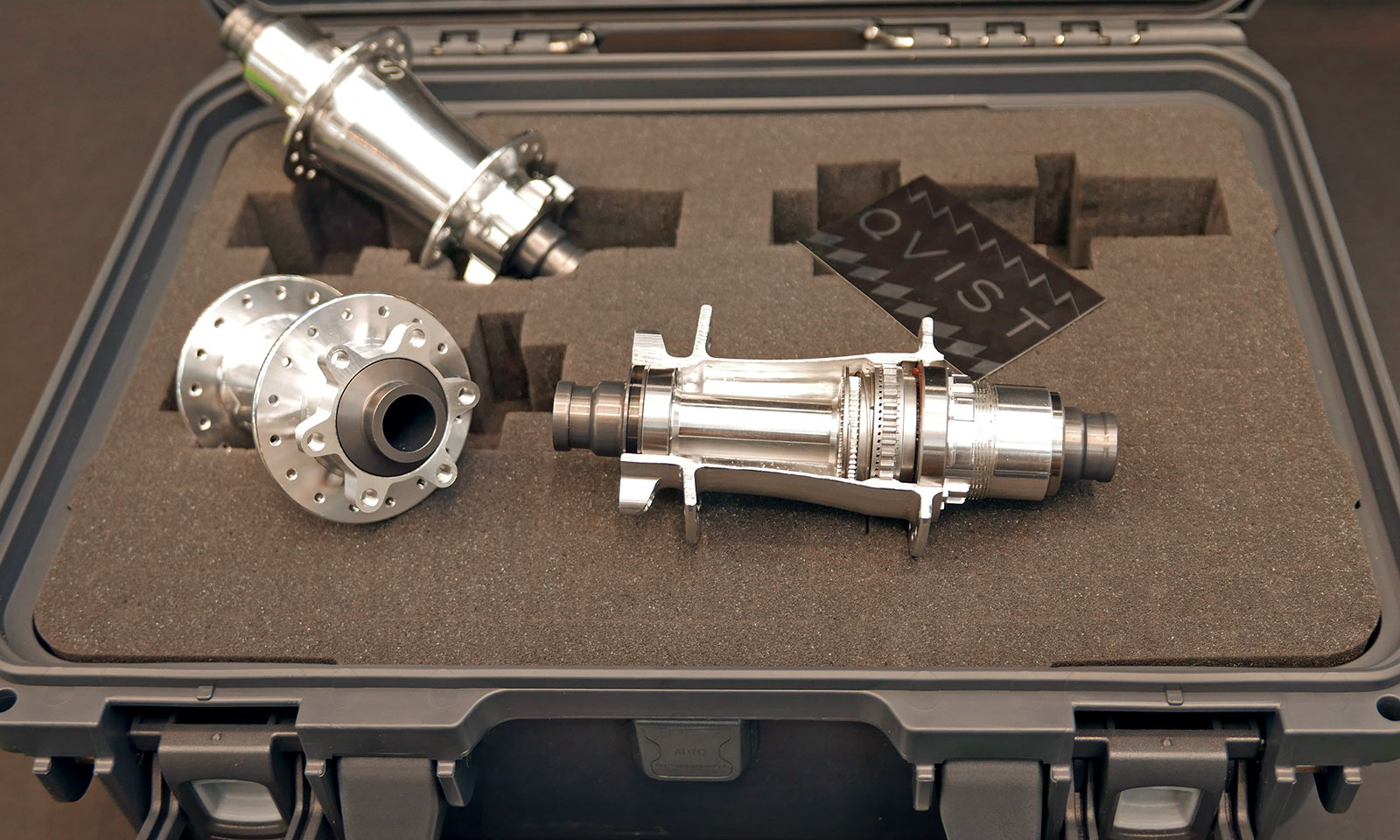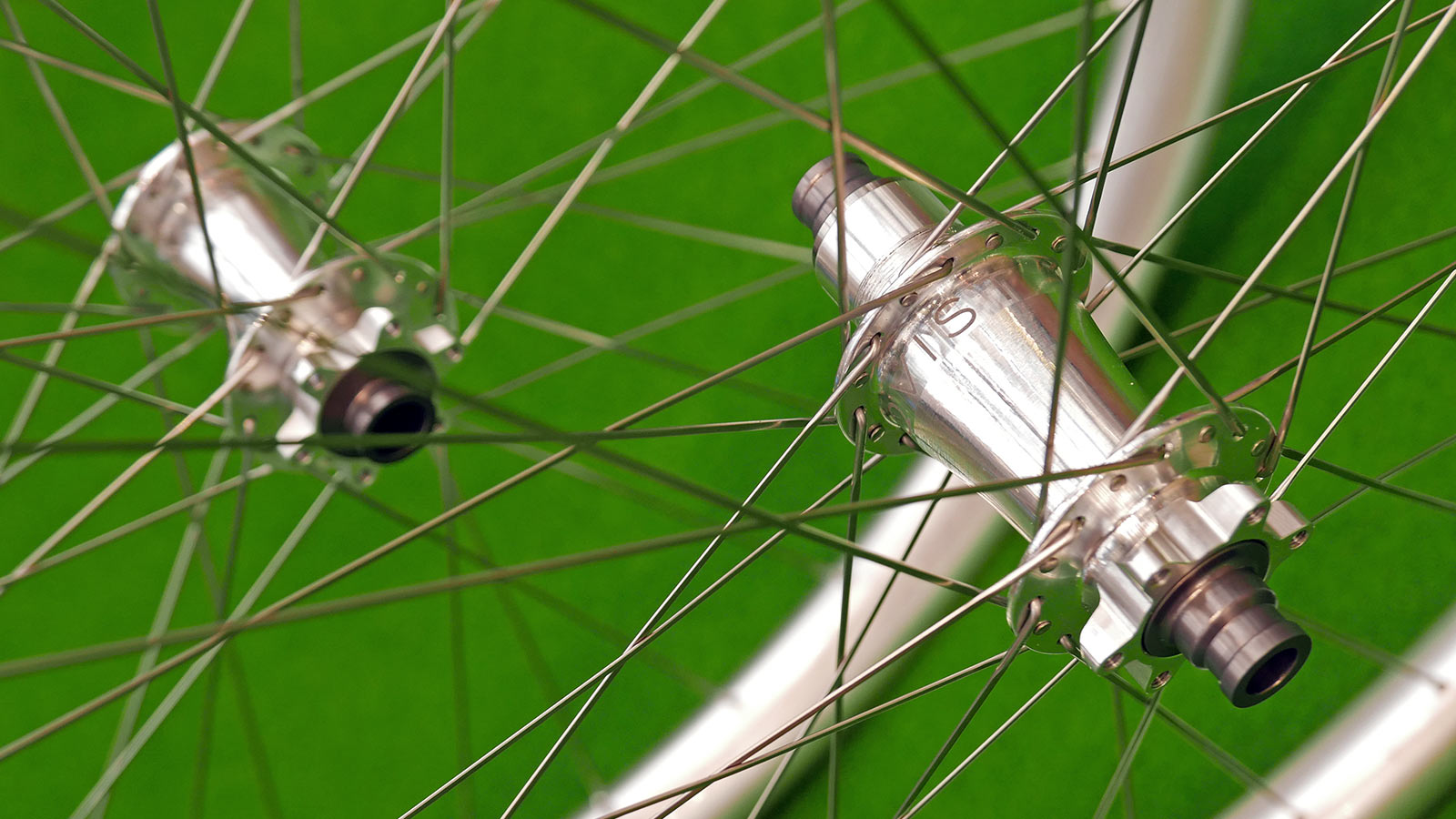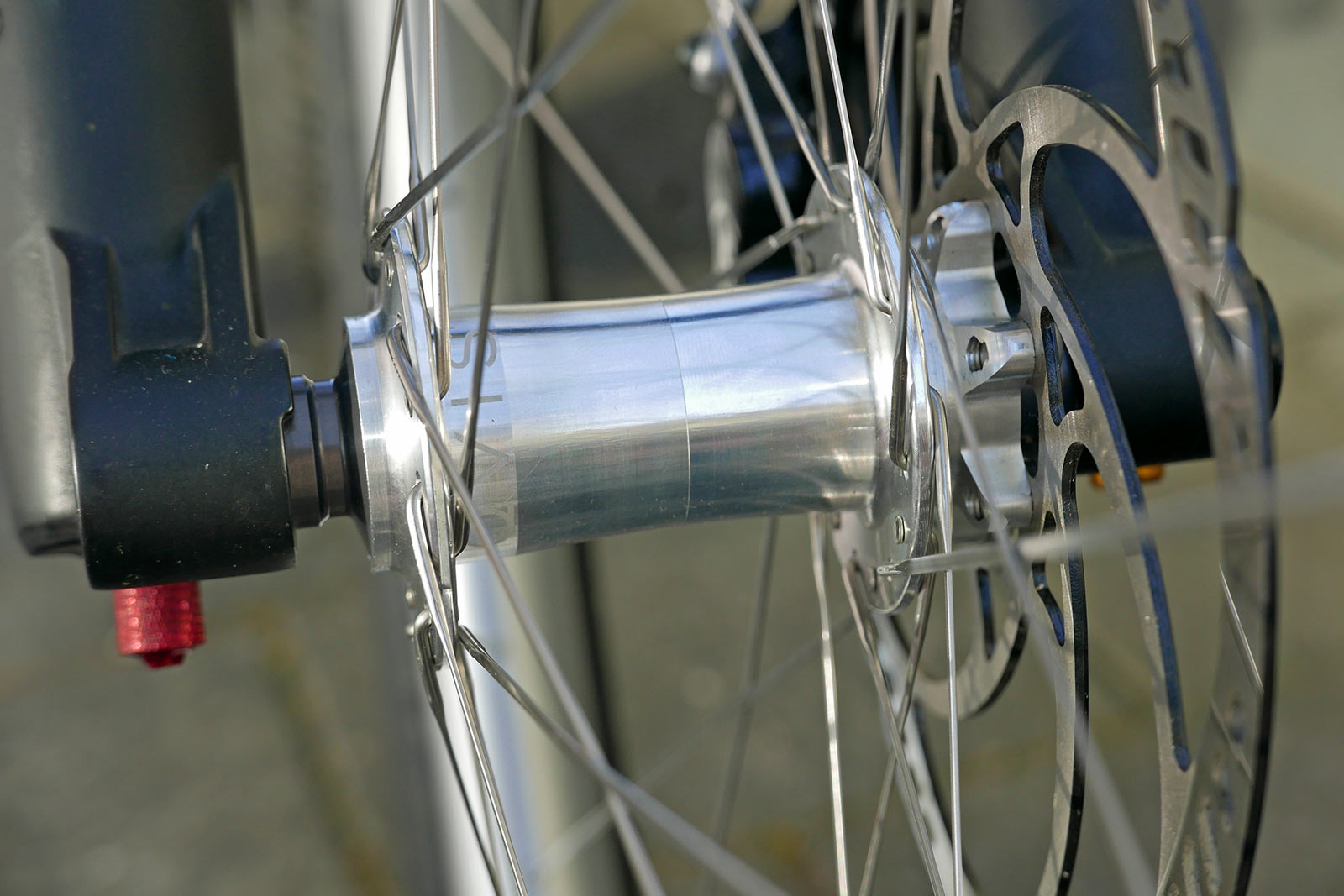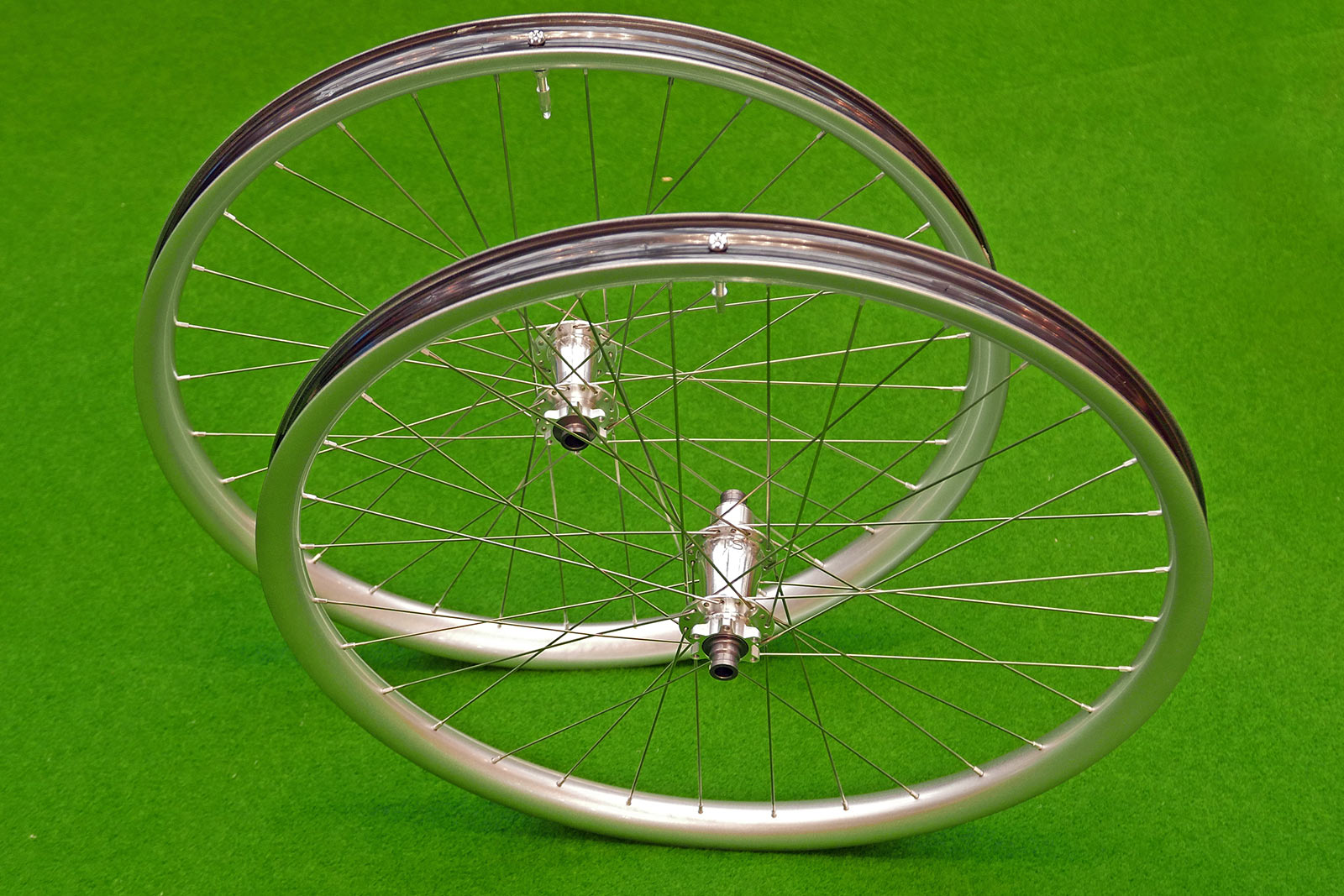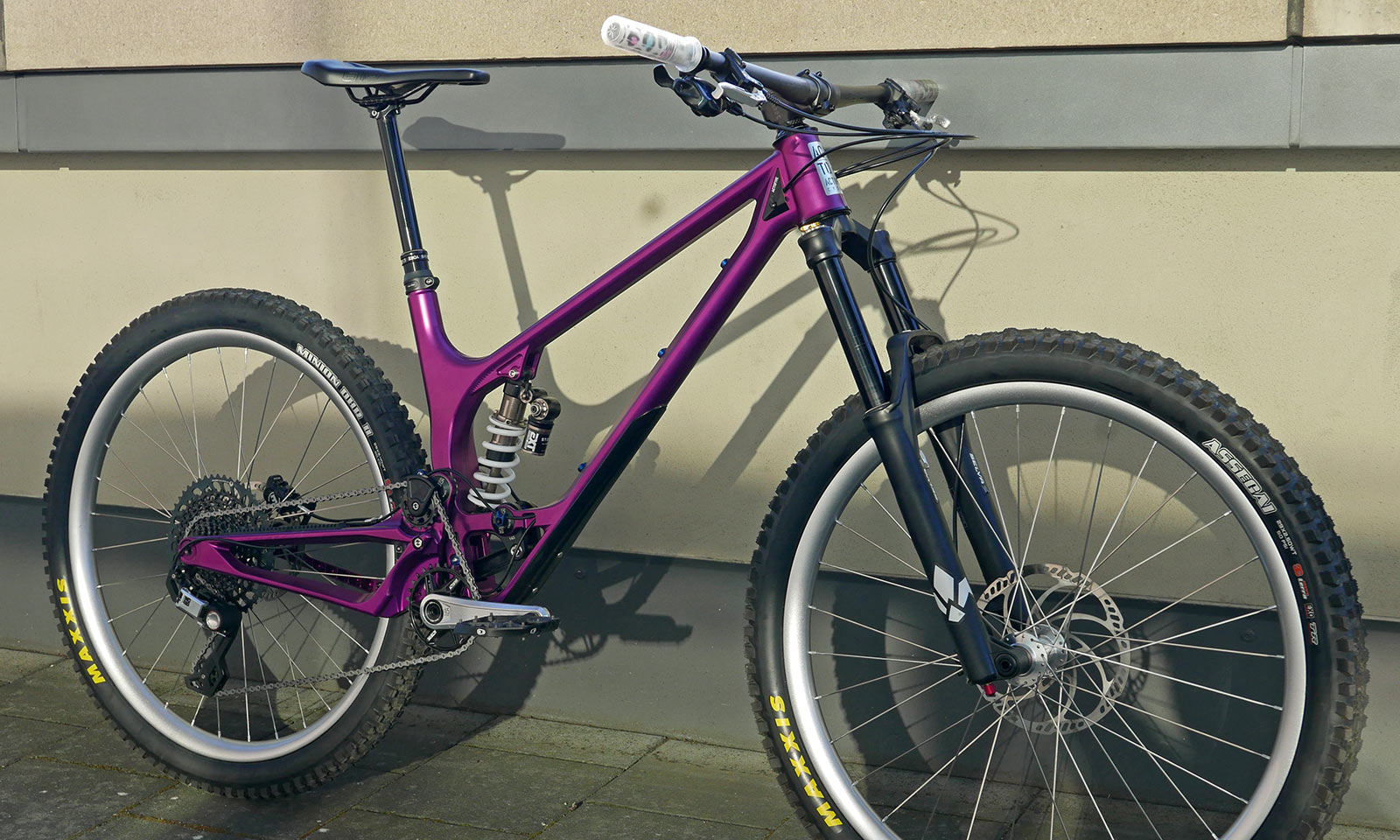All-new Qvist bike hubs spin up an innovative new set of internals to deliver lightning-fast & secure 2.8°, 128-point engagement on & off-road with ratchet tech. Genuinely one of the most innovative technologies we spotted at Eurobike, this hub promises the best of both worlds – speed & toughness. Delivering the proven strength & durability of ratchet hubs, just now 2x as fast engaging, Qvist hubs will also build stronger & longer-lasting wheels thanks to wider bearing spacing and more balanced internal load transfer architecture…
Qvist Double Ratchet 128 POE, 2.8° hubs
The patent-pending secret to the Qvist hub is a relatively simple Double Ratchet System inside. It’s in fact based on the long-established and proven DT Swiss Hügi hub Star Ratchet concept, just taken to a next level…
How does it work?
Instead of just having just one face-to-face ratchet interface inside their hub. Qvist has two 64-tooth ratchet interfaces that interface with an engagement ring that sits between the two.
The two 64T rings are then offset half a step from each other, so one is always engaged, and you get 128 points of engagement for almost instantaneous power transfer. And at 64T a piece, the ratchet rings still have decently sized teeth so you don’t sacrifice durability to get fast engagement.
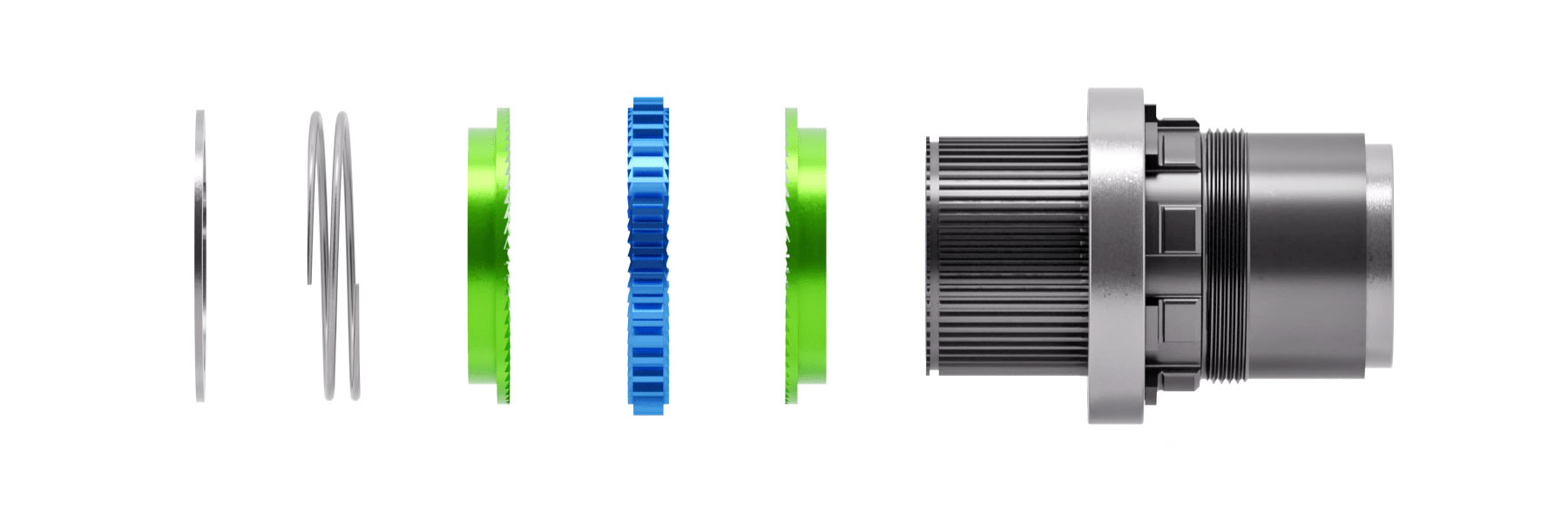
While the Qvist Double Ratchet System may seem a little complex, it actually has just five internal parts in addition to the freehub body, bearings & axle – the retention circlip, spring (this helical spring will be replaced with a custom wave spring in production hubs for more uniform pressure), an inner ratchet ring, the 2-sided ratchet engagement ring, and finally the outer ratchet ring.
That’s fewer parts than the original DT Star Ratchet and the same as the newer DT Ratchet EXP.
Plus, since we are talking a real 2.8° of direct ratchet engagement with all of the engaged ratchet’s teeth at once, these Qvist hubs are going to hook up quicker than most other fast hubs out there. Even though some like i9 Hydra & Onyx claim faster initial engagement, in the real world they still rely on pawl flex or sprag clutch rotation that results in similar speed like this new Qvist design, but with a lot more tiny parts inside that could fail.
Tech details
The thing is, these hubs will not be cheap. There’s a lot of complex machining to make it all work, including on the freehub body that extends deeper than normal into the hubshell, and on which the ratchet rings slide back and forth.
All three ratchet rings get CNC-machined from high-strength stainless steel then heat-treated for long0-lasting strength. The CNC-machined freehubs will be either heat-treated stainless or 7075-T6 alloy, depending on riding discipline.
But the unique design does mean that the main outer driveside bearing at the shell is a large diameter, and it is actually further outboard than almost any other hub. All of the driveside bearings are in fact, pressed onto the freehub body – the two smaller inner & outer bearings on the 17mm axle and the larger one that slides into the hub with the freehub.
View this post on Instagram
Positioning the engagement mechanism inside of that main hubshell bearing also significantly improves the stiffness of the ratchet system and more evenly distributes transmission loads, not to mention the stiffer hub from the wider overall bearing spacing, and subsequent longer bearing life.
Plus, it gives the hub a unique sound, that is definitely not silent.
Qvist hub options
Qvist will offer their 7075-T6 alloy hubs in 28 & 32-hole Boost or 24, 28 & 32-hole Non-Boost spacing, and just in 6-bolt IS disc brake for the time being. They have plans to offer Centerlock hubs in the future as well for both Boost & Non-Boost, but that 6-bolt will be the first priority as it is an open standard.
Freehubs will be available for Shimano Micro Spline, HG, SRAM XD, XDR & Campagnolo N3W.
Rear hubs will weigh a claimed 295g for Boost, 280g for Non-Boost.
Of course, together with a fast engaging rear hub, you’ll need a nice matching front hub too. Qvist has you covered with the same traditional flange disc brake hub in Boost 15mm or Non-Boost 12mm thru-axle spacing. Just to reassure you, they say the front hub has Zero points of engagement.
Front hubs will weigh a claimed 140g for Boost, 115g for Non-Boost.
All Boost hubs have 54mm diameter flanges, as does the Non-Boost Rear. Non-Boost Front will get 45mm flanges. All hubs spin on premium sealed stainless steel bearings.
Qvist Double Ratchet hubset & wheelset availability
So this all sounds great and you want to know where and when you can start riding on some Qvist hubs, right? Well, they aren’t ready just yet.
The concept is there, it’s functional, and reliable (so far), but Qvist are still in the later testing stages at the moment. German manufacturing capability has been sorted out, as has assembly at the HQ in Dresden. They even have the 7 standard anodized hubshell colors picked: black, silver, champagne, green, blue, red & dark gray.
Qvist says the hubs will be available in early 2023 through your local premium custom wheel builder at first. They are still contemplating whether they’ll offer complete wheel builds, or just stick with partnering with a select group of trusted wheel builders.
We played around on this killer purple ano Actofive P-Train CNC enduro bike at Eurobike, trying out the fast engagement of the new Qvist hubs in a set of all silver 30mm internal carbon wheels. As an aside, can I just ask for more all silver wheels, please?
And in the meantime, I’ll be patiently awaiting our own hubset to test as soon as Qvist will let me get my hands on a production set.
